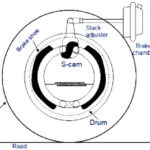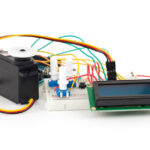Hello Electrical people, you already know about the different types of motors that are available today and in this article, I shall discuss about the various techniques used to stop a DC Motor or to bring it to rest as we cut off the supply. Kindly see that the braking preferred to stop a DC Motor is Electrical Braking and not Mechanical Braking. In other words, the motor is stopped by the voltage and current action in the circuit rather than the mechanical friction brakes on the rotor.Basically, there are three types of electrical braking done in a DC Motor:-
1. Regenerative Braking
2. Dynamic Braking
3. Plugging
Regenerative Braking
It is a form of braking in which the kinetic energy of the motor is returned to the power supply system. This type of braking is possible when the driven load forces the motor to run at a speed higher than its no-load speed with a constant excitation.
The motor back emf Eb is greater than the supply voltage V, which reverses the direction of the motor armature current. The motor begins to operate as an electric generator.
It is very interesting to note that regenerative braking cannot be used to stop a motor but to control its speed above the no-load speed of the motor driving the descending loads.
Dynamic Braking
It is also known as Rheostatic braking. In this type of braking, the DC motor is disconnected from the supply and a braking resistor Rb is immediately connected across the armature. The motor will now work as a generator, and produces the braking torque.
During electric braking when the motor works as a generator, the kinetic energy stored in the rotating parts of the motor and a connected load is converted into electrical energy. It is dissipated as heat in the braking resistance Rb and armature circuit resistance Ra.
Dynamic Braking is an inefficient method of braking as all the generated energy is dissipated as heat in resistances.
It is also known as reverse current braking. The armature terminals or supply polarity of a separately excited DC motor or shunt DC motor when running are reversed. Therefore, the supply Voltage V and the induced voltage Eb i.e. back emf will act in the same direction. The effective voltage across the armature will be V + Eb which is almost twice the supply voltage.
Thus, the armature current is reversed and a high braking torque is produced. Plugging is a highly inefficient method of braking because, in addition to the power supplied by the load, power supplied by the source is wasted in resistances.
It is used in elevators, printing press etc.
These were the main three types of braking techniques preferred to stop a DC motor and used widely in industrial applications.


